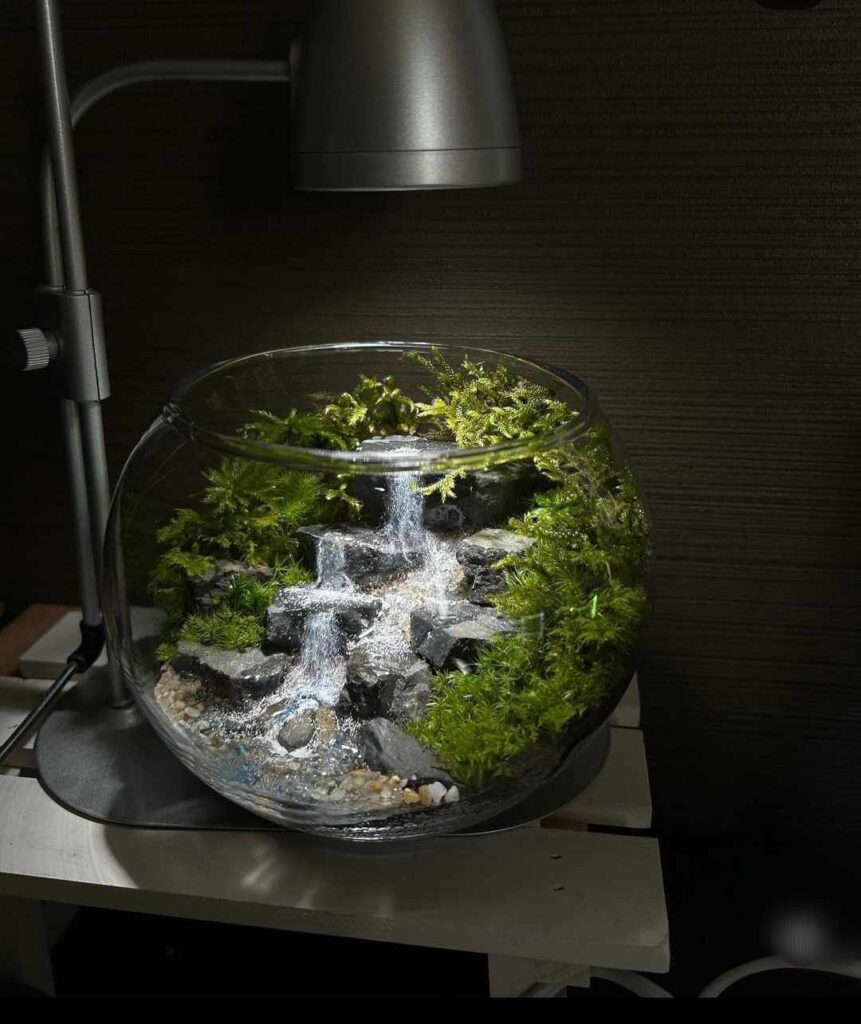
Creating a mesmerizing waterfall within the confines of a jar might seem like an impossible feat, but with a little creativity and the right techniques, it’s achievable. This article guides you through the process, showcasing a project with twin waterfalls and a captivating natural design.
Materials Needed:
- A clear glass jar with an open top
- Small water pump
- Vinyl tubing and airline splitter
- Lava rocks
- Hot glue gun and super glue
- Cardboard (for the guide)
- Lava rock dust
- Sphagnum moss
- Tree moss and other moss varieties
- Spiderwood branches
- Anubias plants
- Window screen or knitting mesh
- Silicone adhesive
- Charcoal (optional)
The Challenges and Solutions:
One of the biggest hurdles is accommodating the pump. While larger openings make placement easier, it’s crucial to ensure accessibility for servicing and potential replacements. A more advanced solution involves drilling a hole and housing the pump in a separate reservoir, but this can affect aesthetics and requires specialized tools.
The challenge of finding small, reliable pumps cannot be overlooked. Smaller pumps tend to be louder, but the article highlights a quieter alternative. The key is finding a balance between size, performance, and noise level.
Concealing the Pump:
The article advocates for a natural approach, using lava rocks to create a column around the pump, providing both concealment and access. The process involves building a cardboard guide, applying hot glue to attach the rocks, and leaving a hole for the pump. While hot glue offers temporary stability, superglue and lava rock dust are used for a permanent and seamless finish.
Constructing the Waterfall:
To begin, use a sturdy piece of cardboard slightly larger than the pump as a base. This will serve as a guide for constructing your lava rock structure. Apply hot glue to the cardboard and carefully build a column of lava rocks around the pump, ensuring you leave space for the pump’s hose. Keep in mind that hot glue is only a temporary fix; we’ll secure everything later. Next, make a small hole at the base of the structure to allow water to flow through. Once the basic structure is in place, coat it with super glue and sprinkle lava rock dust over the entire surface. This step helps create a natural, seamless appearance. Finally, attach a piece of window screen or knitting mesh to the opening at the bottom of the structure. This will help create a realistic-looking waterfall effect.
Creating the Environment:
The article stresses the importance of building the terrarium from the viewer’s perspective. Utilizing sphagnum moss, strategically placed rocks, and varying textures, the project gradually transforms from a simple structure to a captivating natural landscape.
Adding the Finishing Touches:
The use of various moss varieties, including tree moss and sphagnum moss, enhances the visual appeal and provides a natural moisture barrier. Spiderwood branches add texture and color, and Anubias plants contribute to the overall foliage.
Final Considerations:
The article emphasizes the importance of charcoal for filtration, though it was omitted in this particular build. The lid is another element that can be adjusted depending on preference. A vented lid minimizes condensation while maintaining visibility.
This article provides a comprehensive guide to building a waterfall terrarium, showcasing creative problem-solving, practical techniques, and a focus on natural design. While not a beginner project, it demonstrates the possibilities within the terrarium world, proving that with a little dedication and attention to detail, anyone can create a miniature masterpiece.Now, go get creative and turn that jar into your own little waterfall paradise!